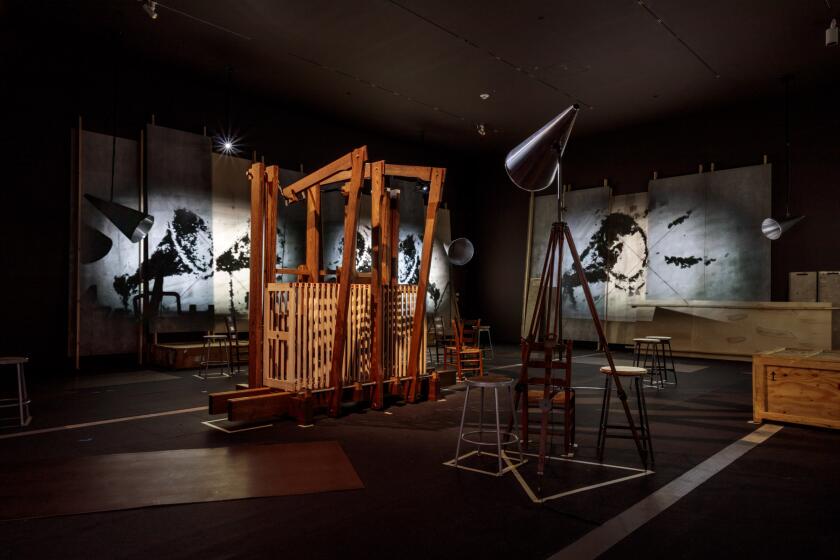Review: Transcendental Painting Group is one of Modern art’s best kept secrets. This LACMA show proves it
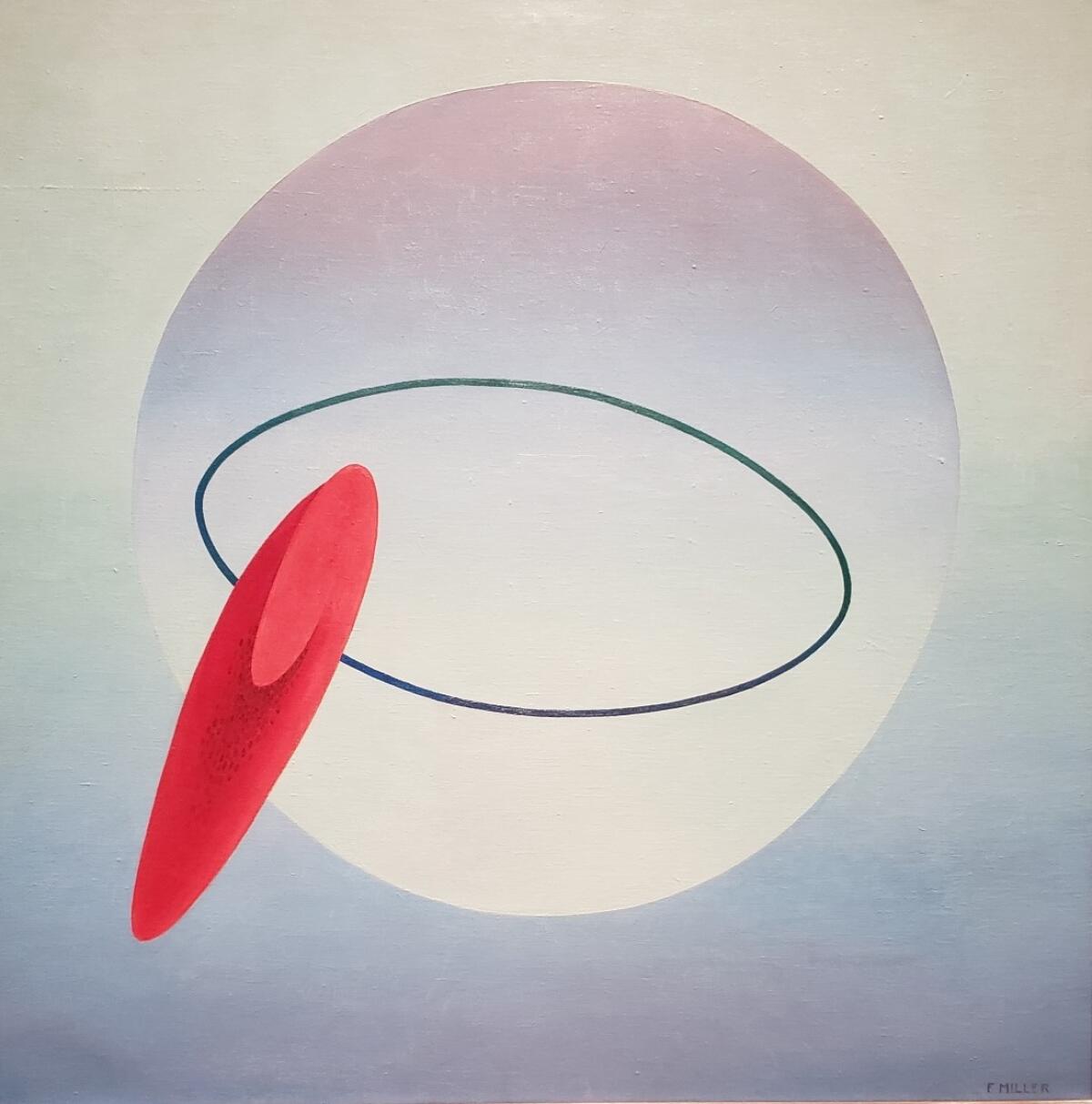
During the month of June in 1938, a number of historically significant events took place.
The Great Depression’s final devastating wave of economic recession bottomed out, after yet another grueling year clobbered Americans. Nazi Germany passed a law to confiscate and destroy what fascists long claimed to be “degenerate art,” which caused the brilliant Expressionist painter Ernst Ludwig Kirchner, brutally targeted, to take his own life. To combat foreign exploitation of Mexico’s natural resources, President Lázaro Cárdenas established Pemex, a state-run oil company that nationalized the industry. In New Mexico, one of our nation’s poorest states, the Transcendental Painting Group was founded.
You’re probably aware of several or maybe even most of these historic events. However, if you’ve never heard of the Transcendental Painting Group, or TPG, don’t be surprised. Lasting only a few short years, with a formal roster of just 10 artists (plus a few supportive associates), the abstract painting movement is high on the list of Best Kept Secrets in Modern art.
Happily, the beans are now being spilled. “Another World: The Transcendental Painting Group” recently opened at the Los Angeles County Museum of Art. The era’s tumultuous bouts with the debilitating effects of materialist greed, international corporate capitalism and abusive authoritarian power structures were among the forces instrumental in the movement’s organized formation. Too soon, the traumatic disruptions of World War II brought that to a halt, but not before some extraordinary art got made.
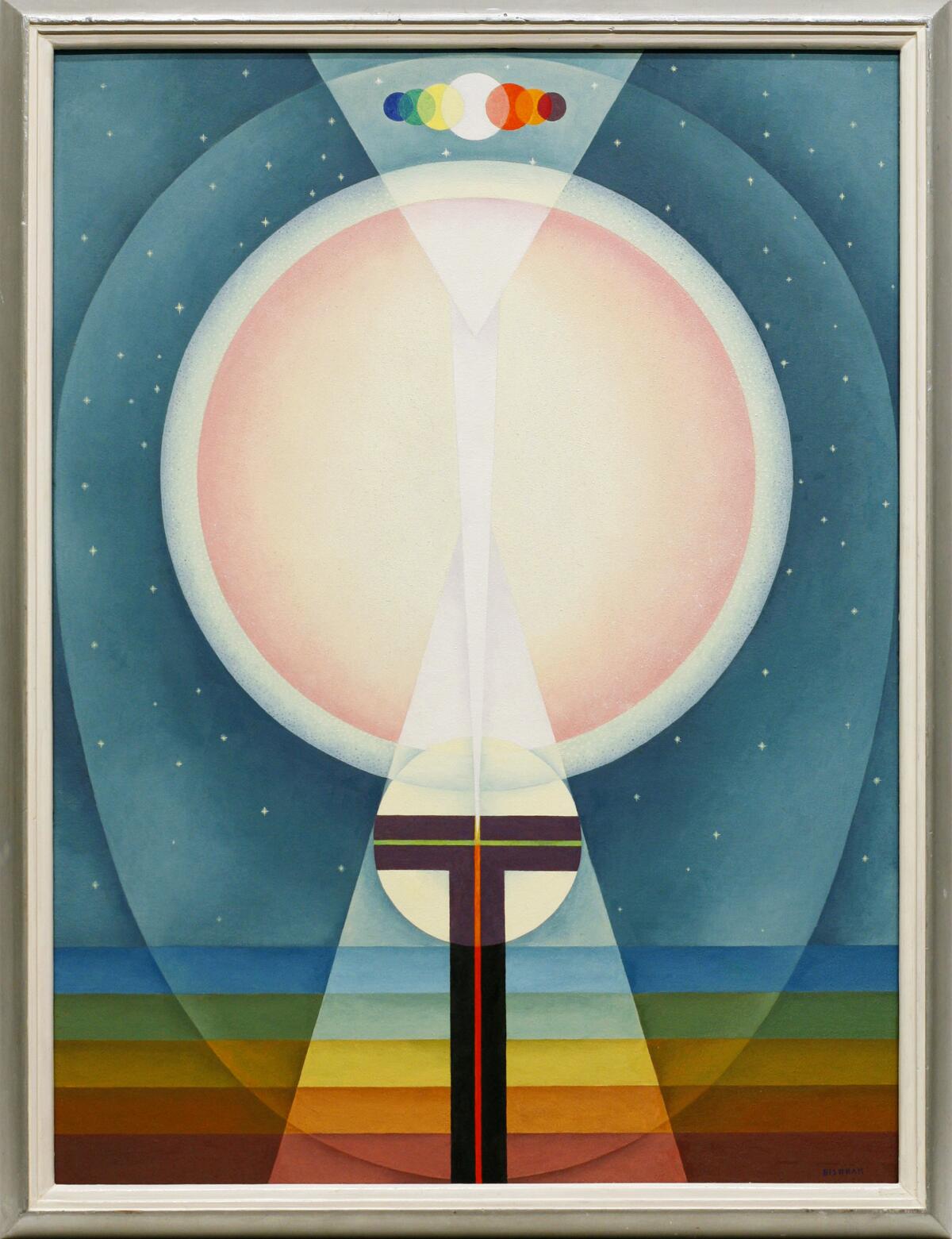
The traveling exhibition is a fascinating survey — nearly a decade in the making and nearly derailed (but only postponed) by the COVID-19 pandemic. Organized by independent curator Michael Duncan for the Crocker Art Museum in Sacramento, and winding up a five-city tour, it’s the first of its kind to chronicle a full history of a distinctive approach to abstraction that has been too long ignored.
As its name suggests, transcendental painting was a spiritual pursuit — not religious, but spiritual. The aim was to register the unadorned soul on canvas, crafting a painting to provide a viewer the opportunity to experience communion with it.
The TPG meant to fill a perceived gap in the art life of the 1930s, which was dominated by generally conservative paintings of the American Scene and more critical Social Realism charting the ups and downs of daily existence. Russian painter Wassily Kandinsky is the usually cited genius precursor of such an ambition, and diverse abstractions by Emil Bisttram, who left Hungary as a boy and is one of the TPG movement’s two founders, are the most like it. Bisttram employed sinuous organic forms, linear geometric constructions, dramatic color and dynamic symmetry in compositions.
But work by the TPG is never programmatic, perhaps because most of the artists were fully formed when they got together — all but three in their 30s, 40s and 50s. At just 20, Florence Miller Pierce was the youngest, but she turned out to be as good as it gets.
Her 1940 “Rising Red,” one of the show’s most beautiful works, painted when she was 24, couldn’t be more stylistically different from the eight by Bisttram. Three feet square, its shape avoids the inevitable landscape associations of a horizontal canvas and the figurative allusions of a vertical one.
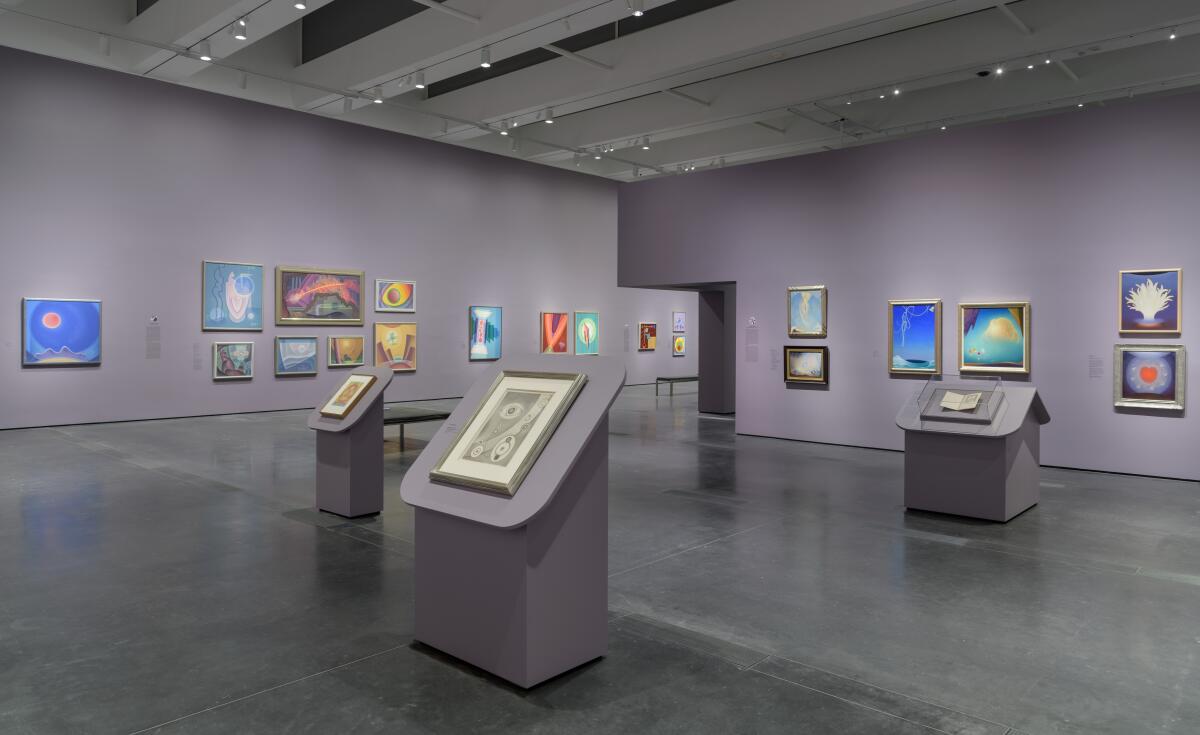
A circular blue form is at the center of the square blue field, which is darker at the bottom and lightens to a rose hue as it rises — the opposite of the color within the enclosed circular form. Optically, the diaphanous disk becomes a sphere. Its swelling three-dimensional illusion also easily flips into the appearance of an indentation into the painting’s flat surface. That two-dimensional surface visually expands into deep space, thanks to the juxtaposition of the colors.
Pierce isn’t done yet. She added an equilateral oval line, slightly off-center within the disk’s perfect circle. The slim black line visually tilts the space, helping to animate the optical shift between bulging sphere and shallow indentation.
To cap it off, a narrow, tilted oval shape in vivid red curves in on itself to the left, dropping a shower of dark brush marks within its profile. Nothing in Pierce’s gorgeous painting looks like an imitation of something in nature, but all of it feels like an expression of nature’s exquisite coherence.
The diversity of nonfigurative approaches in the show is broad. The luminous blossoming shape central to the “The Voice” by Agnes Pelton, the Southern California painter who is today perhaps the most widely known artist to affiliate with the TPG, gives dazzling form to amorphous sound. “The Voice” speaks, but not in words. Her 14 paintings and two sketchbooks comprise the largest group of works by a single artist in the show — nearly a quarter of the 58 paintings.
“Abstraction #119” by Lawren Harris, an acclaimed Canadian painter who relocated from Toronto to Santa Fe, transforms fluid weather in a mountain landscape into a symphonic construction of radiant color-shapes. (The complex composition is like the intricate mechanism inside a pocket watch.) Raymond Jonson, the Santa Fe mover and shaker who founded TPG with Bisttram, located in Taos — and who championed out-of-state Pelton — was voraciously experimental, his deft use of an airbrush giving a metallic sheen to incandescent machine forms.
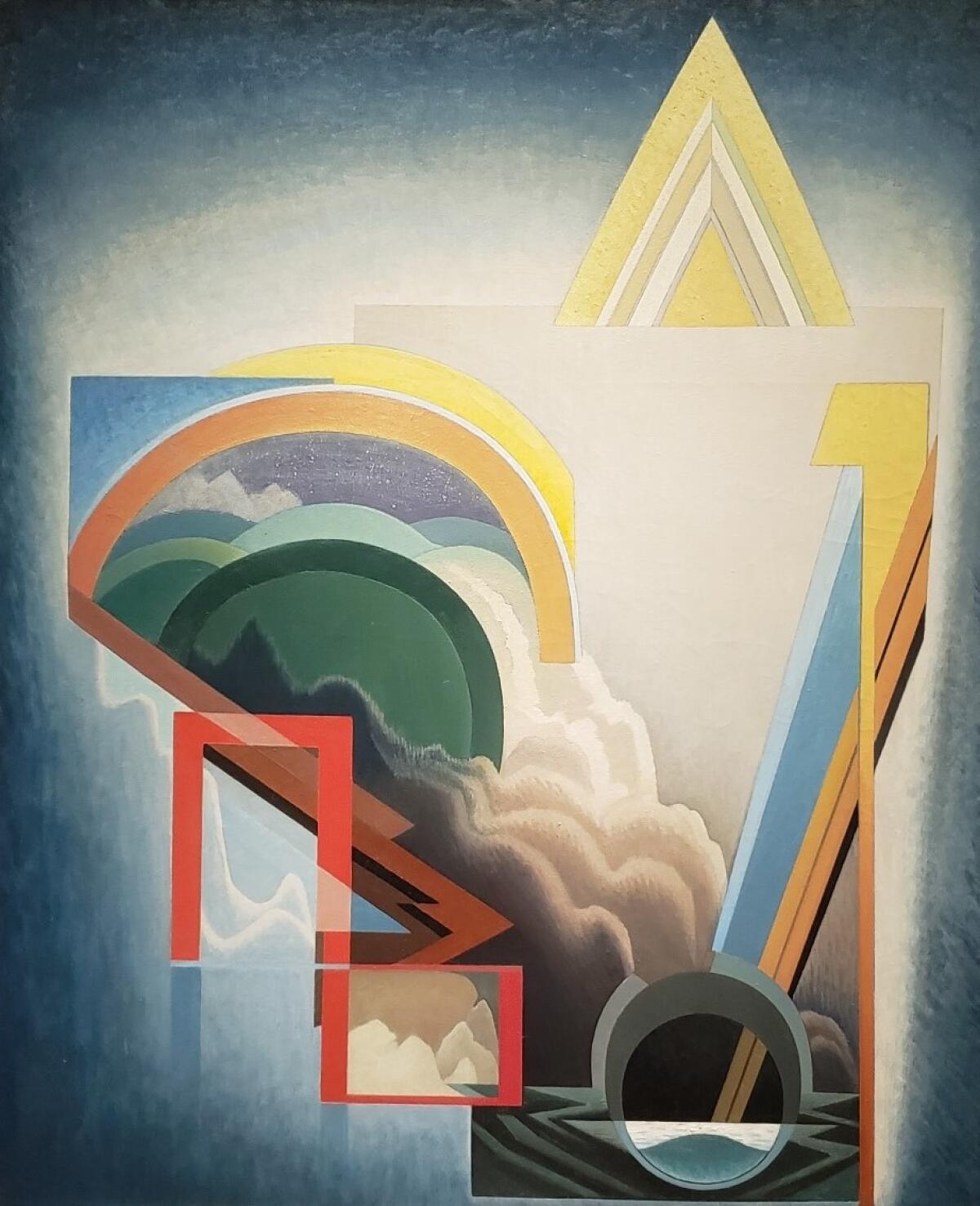
One delight in the show is the speculative construction of a planned but never executed film by little-known Horace Towner Pierce, husband of Florence Miller. (A Quaker, he died young, succumbing to a cerebral hemorrhage at just 42.) The short film, based on a lovely suite of airbrushed drawings that survive, is composed of layered color-spirals, both organic and angular, that intertwine, drifting in and out of one another.
The exhibition catalog features six essays, along with in-depth biographical entries on all 10 artists plus philosopher and musician Dane Rudhyar, the group’s principal theorist. A big chunk of Rudhyar’s unpublished 1938 treatise on the art, which positions the sometimes esoteric features of transcendentalism as a spiritual bulwark against rising international fascism and communism, is included. Much is essential history, finally written. It’s capped by a fascinating, down-to-earth essay by MaLin Wilson-Powell, former curator of the Raymond Jonson Gallery at the University of New Mexico, where I first learned of the TPG in the late 1980s, on why the state formed an ideal crucible for the genre’s emergence.
Review: William Kentridge’s sprawling Broad installation is an extraordinary meditation on apartheid
The travails of apartheid South Africa speak to today’s rise in authoritarianism, which William Kentridge probes in his art.
It isn’t necessary to be deeply informed in the spiritual intricacies of theosophy or other early 20th century occult systems to be absorbed into the pleasures of transcendental painting. That’s not surprising. You don’t have to be Roman Catholic to have your breath taken away by Fra Angelico’s gentle frescoes depicting saints in the Dominican Convent of San Marco in Florence, Italy, nor a Buddhist to experience the contemplative journey of enlightenment through a 16th century landscape painting by Chinese master Dong Qichang.
In fact, its visual appeal might be regarded as a sign of the work’s nonnarrative power. But, given today’s flourishing climate of fascist hate, TPG does gain a wholly unexpected topicality. The human spirit is regularly battered, but it is not going away.
Another World: The Transcendental Painting Group, 1938–1945
Where: Los Angeles County Museum of Art, 5905 Wilshire Blvd., Los Angeles
When: Thursdays-Tuesdays, 11 am–6 pm. Closed Wednesdays. Through June 19.
Info: (323) 857-6000, www.lacma.org
More to Read
The biggest entertainment stories
Get our big stories about Hollywood, film, television, music, arts, culture and more right in your inbox as soon as they publish.
You may occasionally receive promotional content from the Los Angeles Times.
